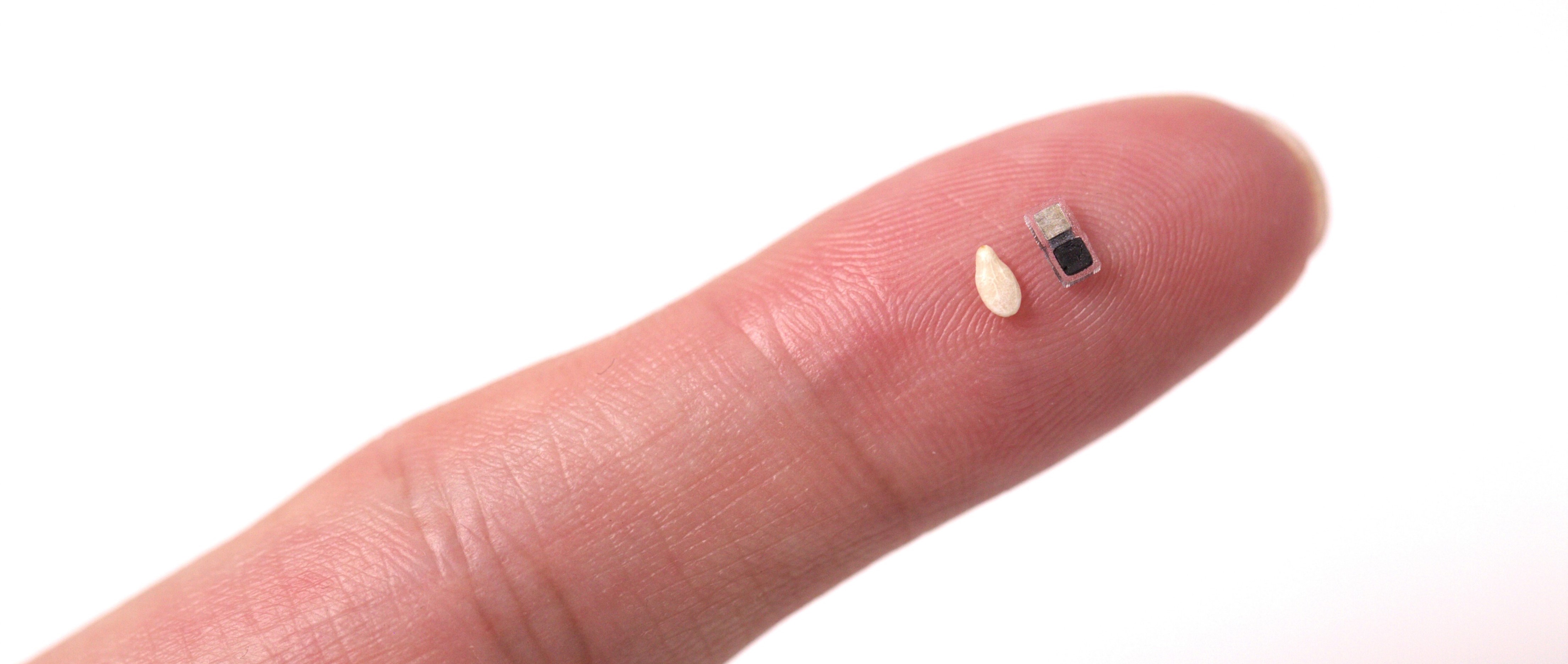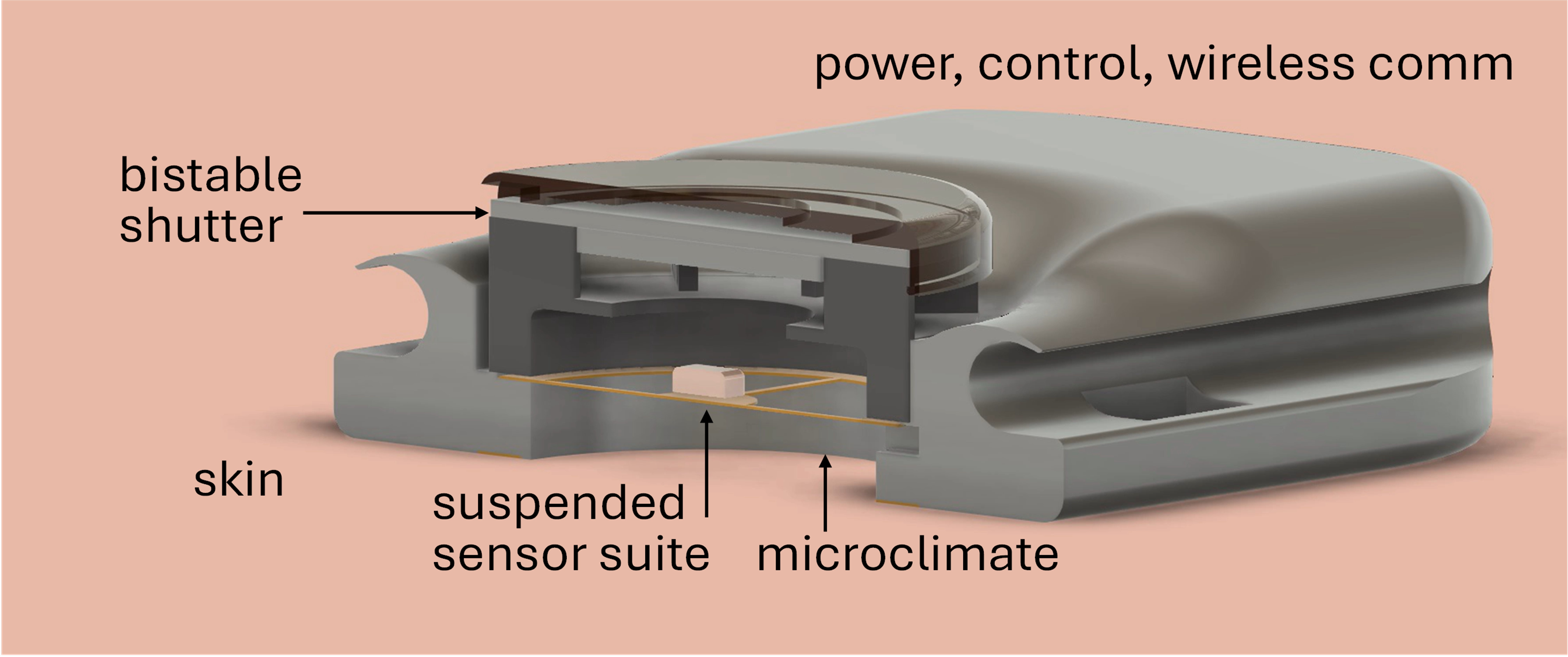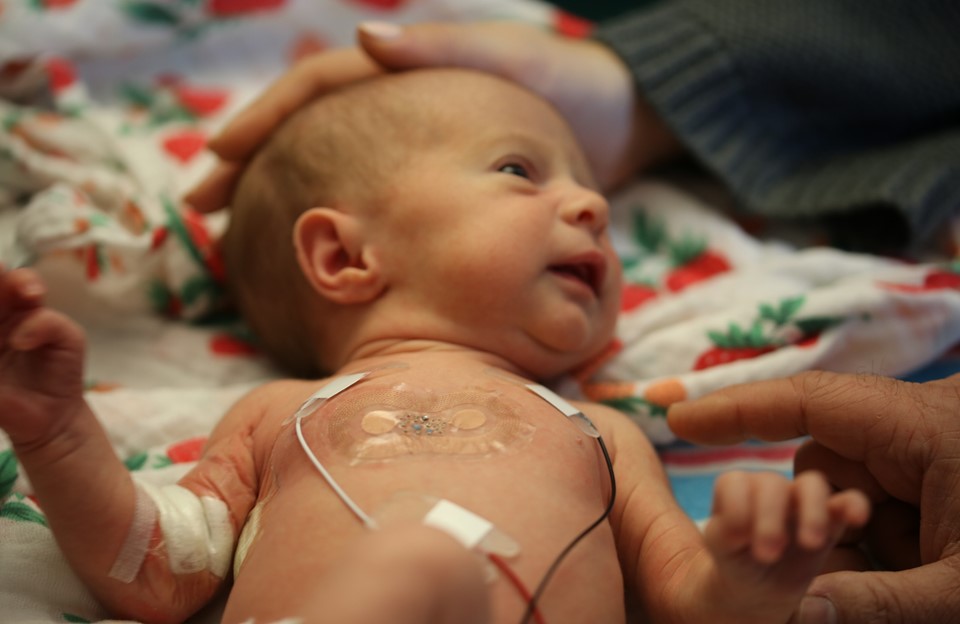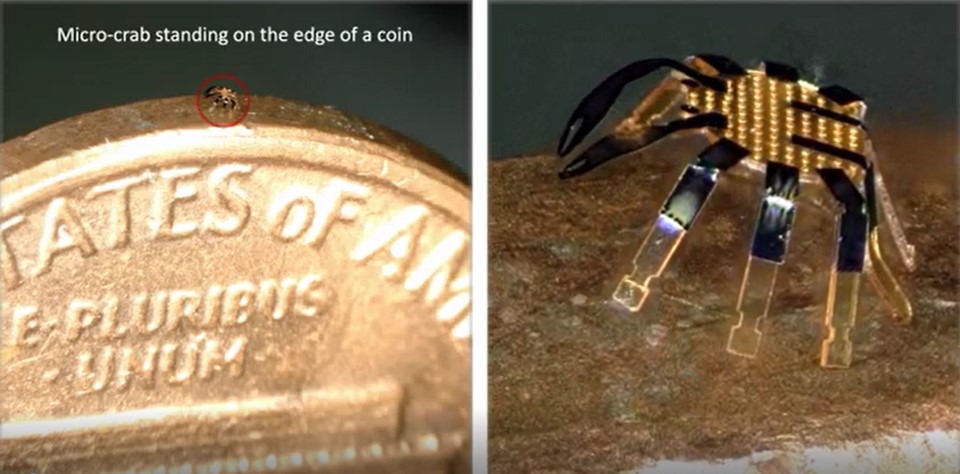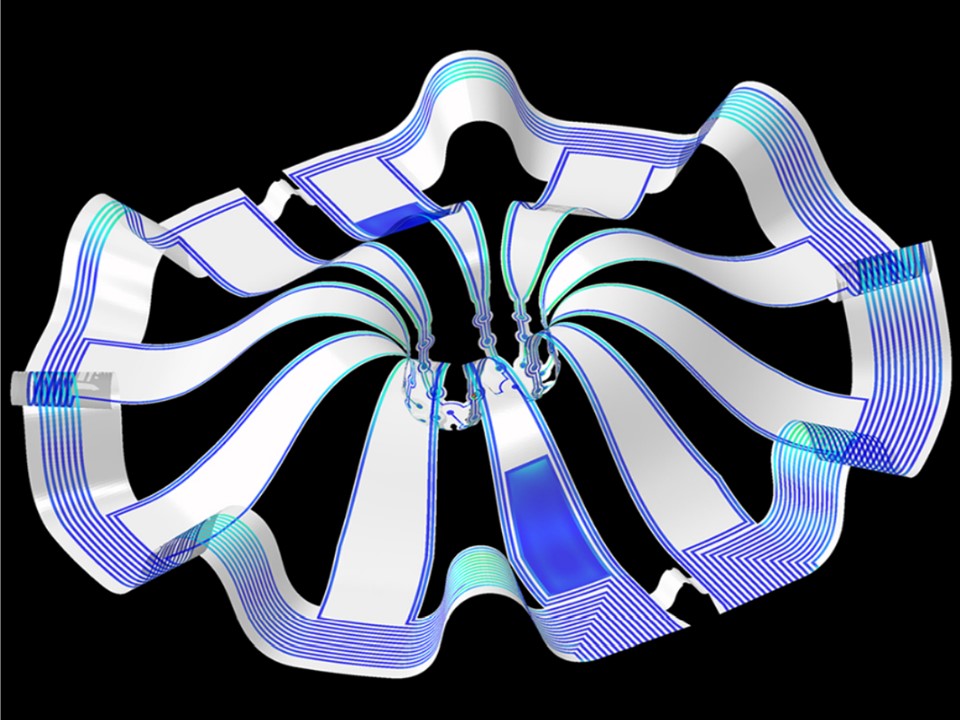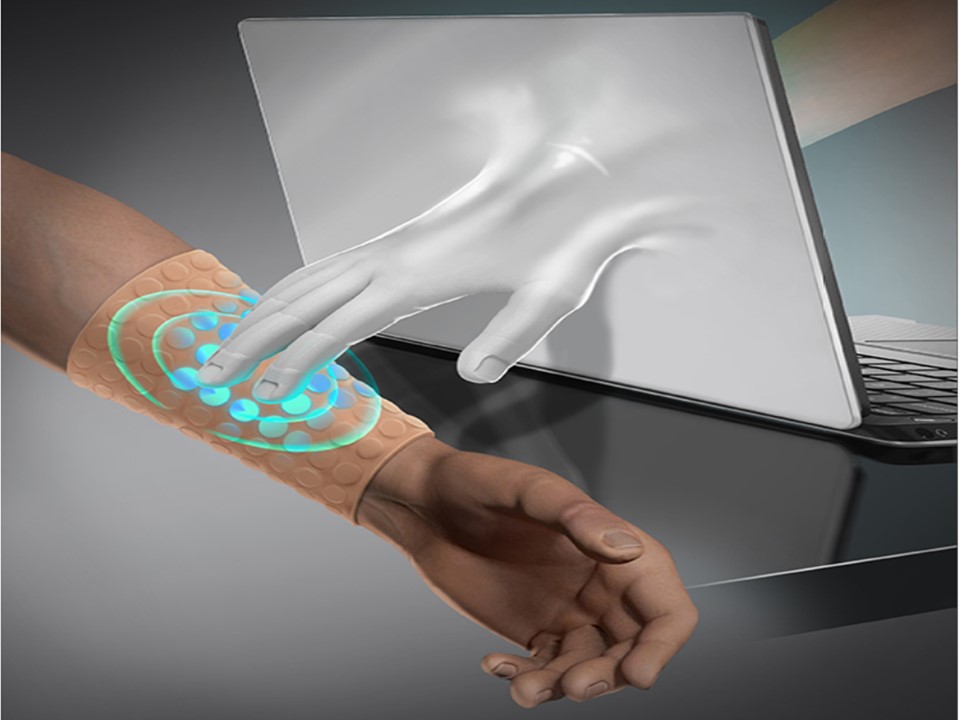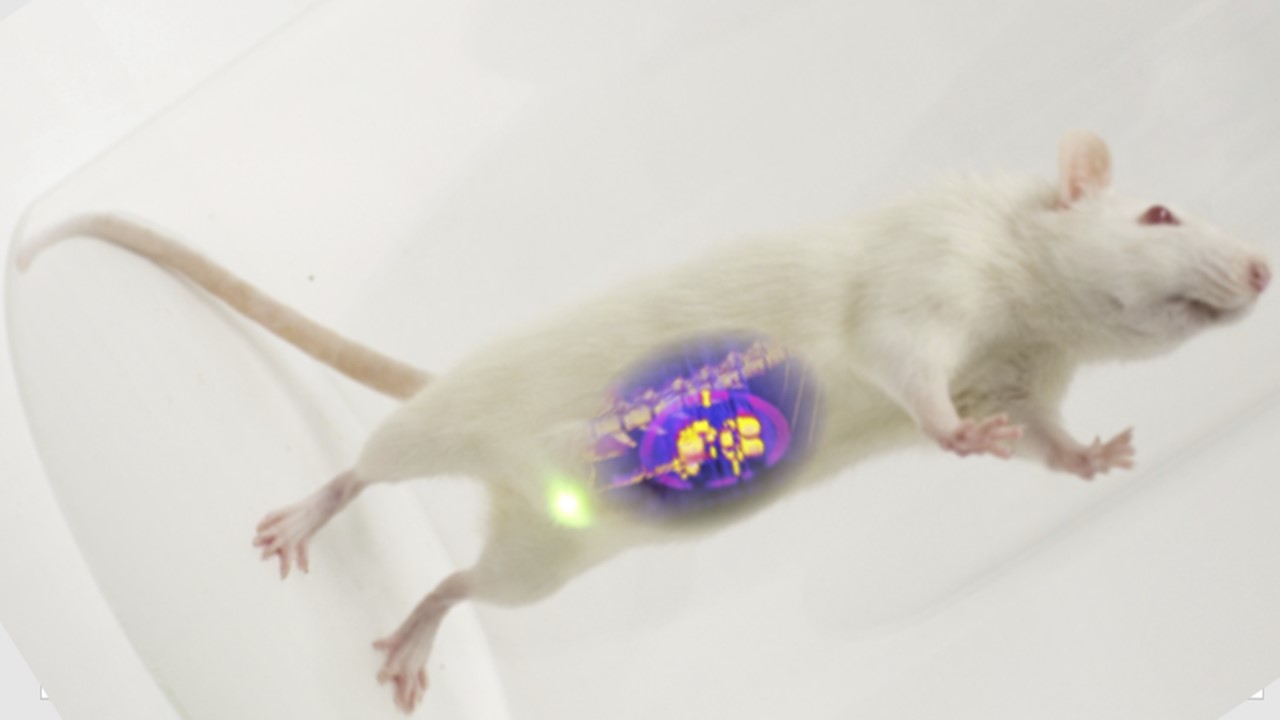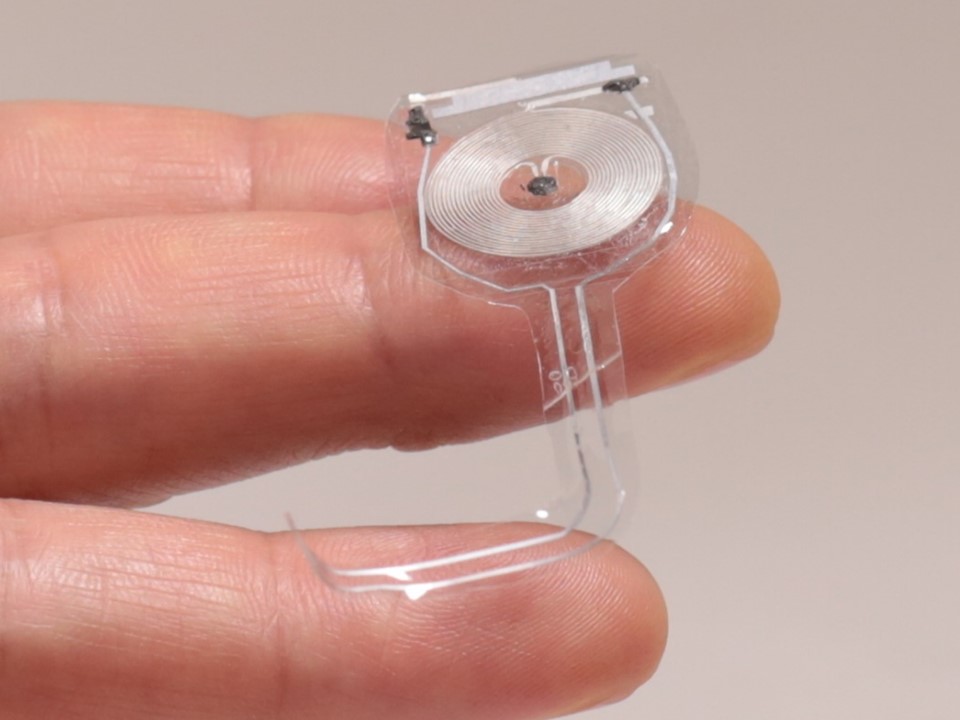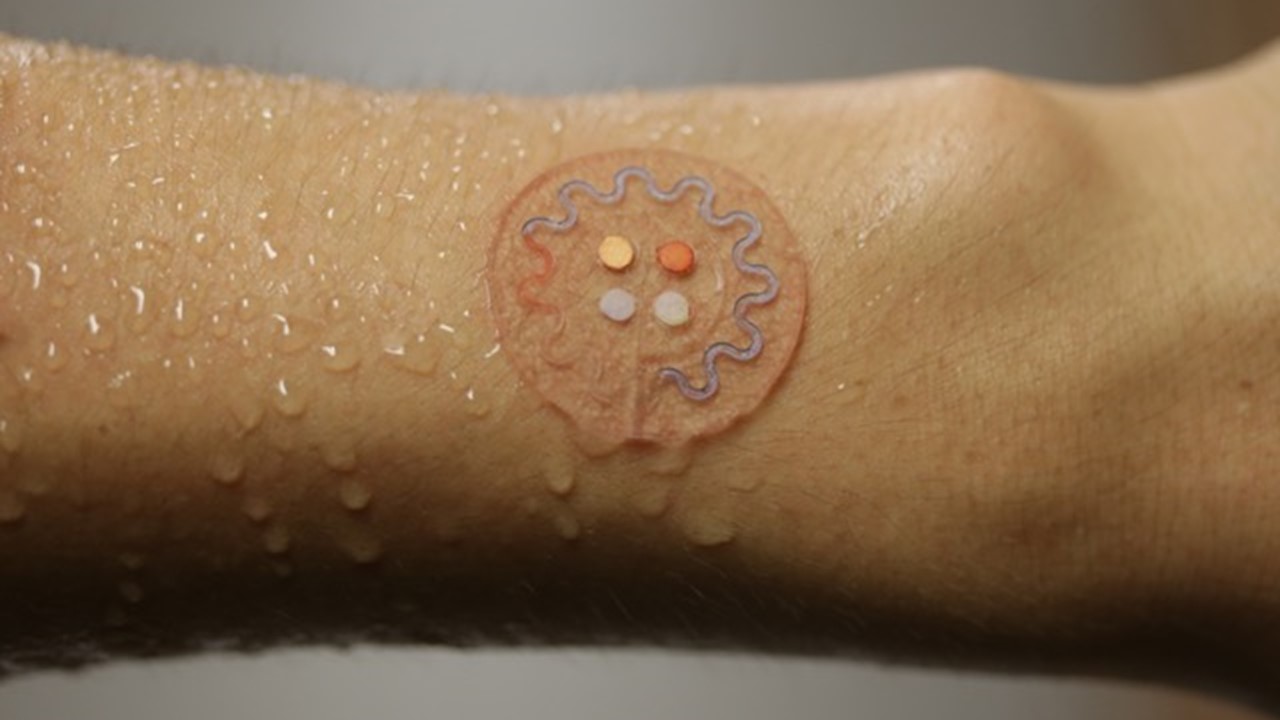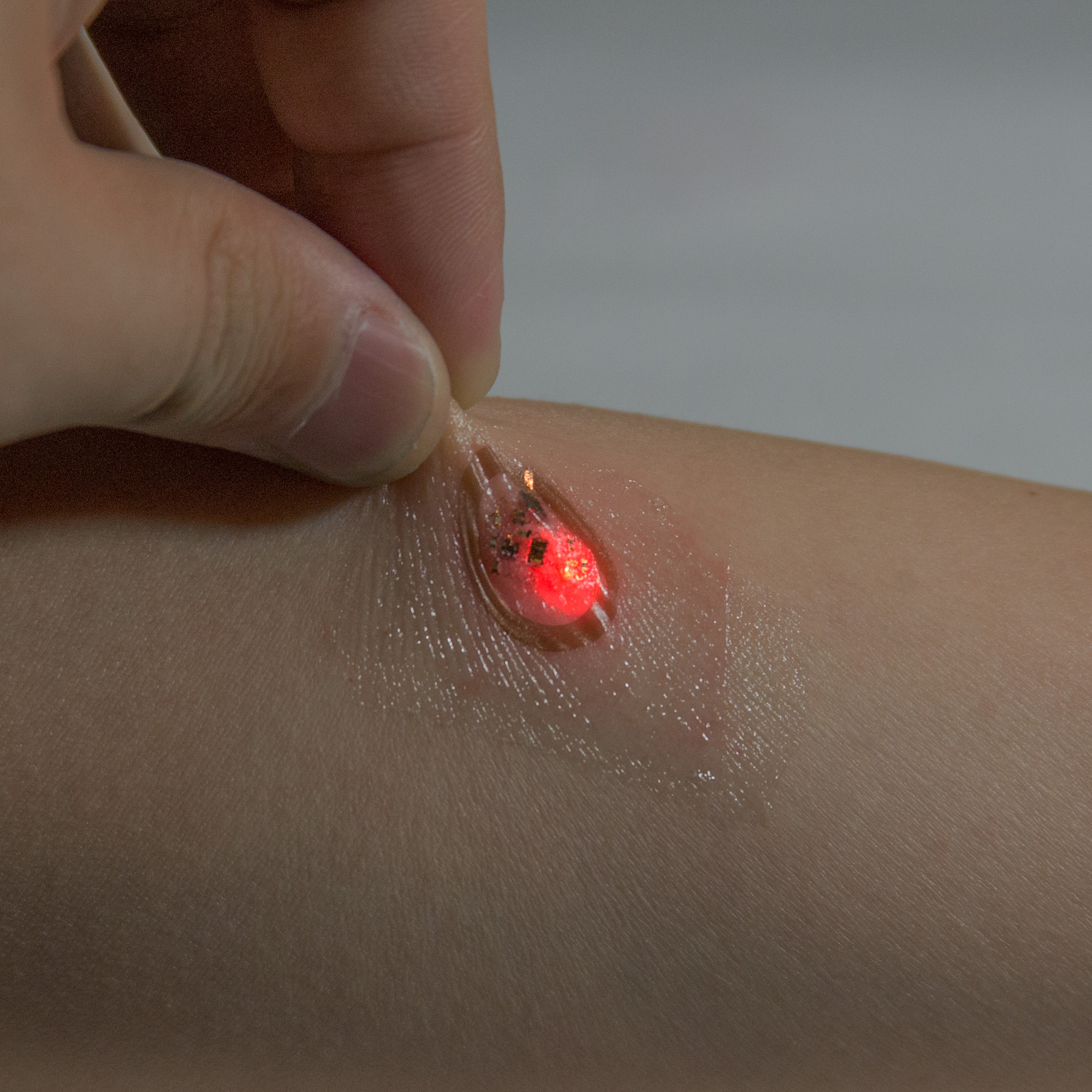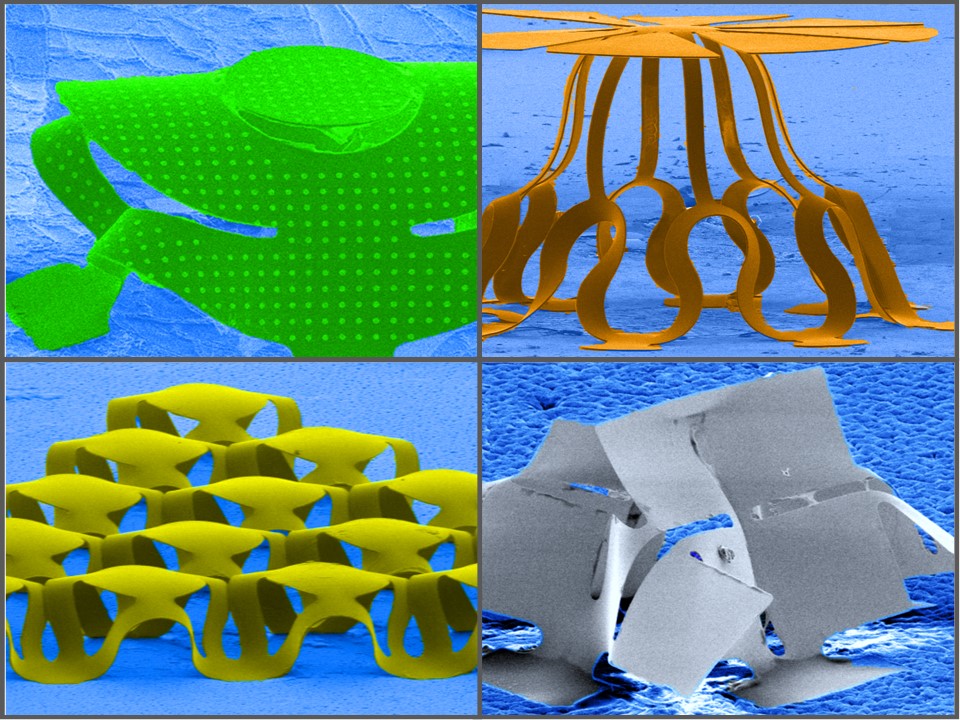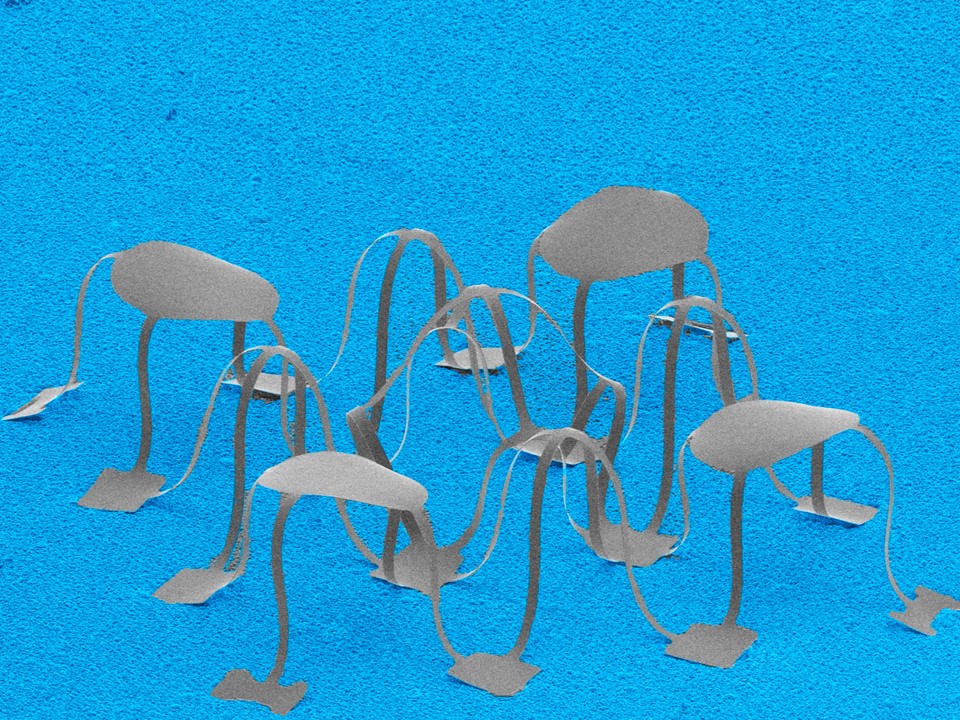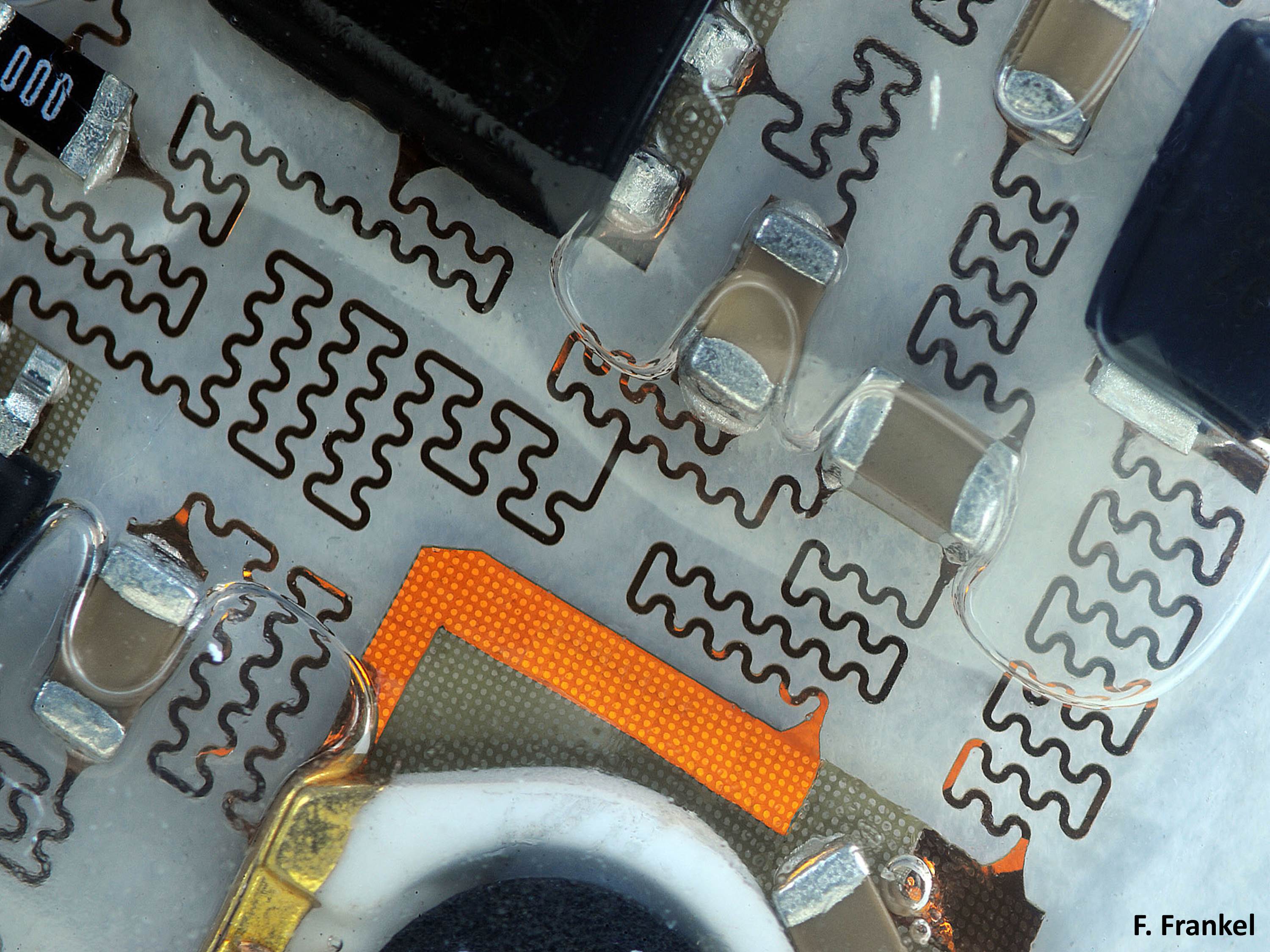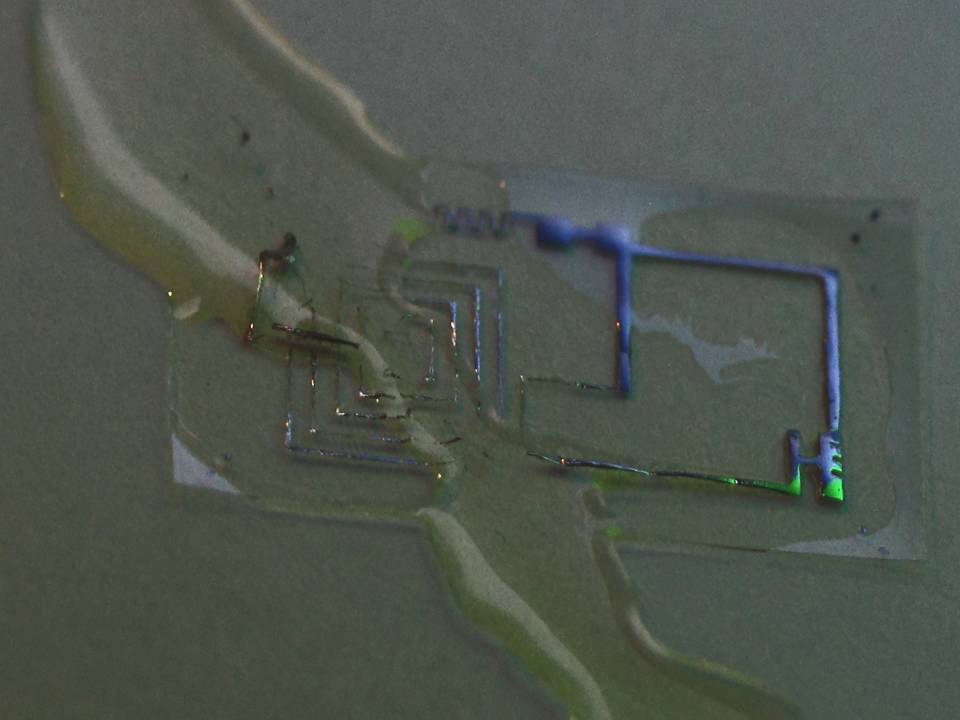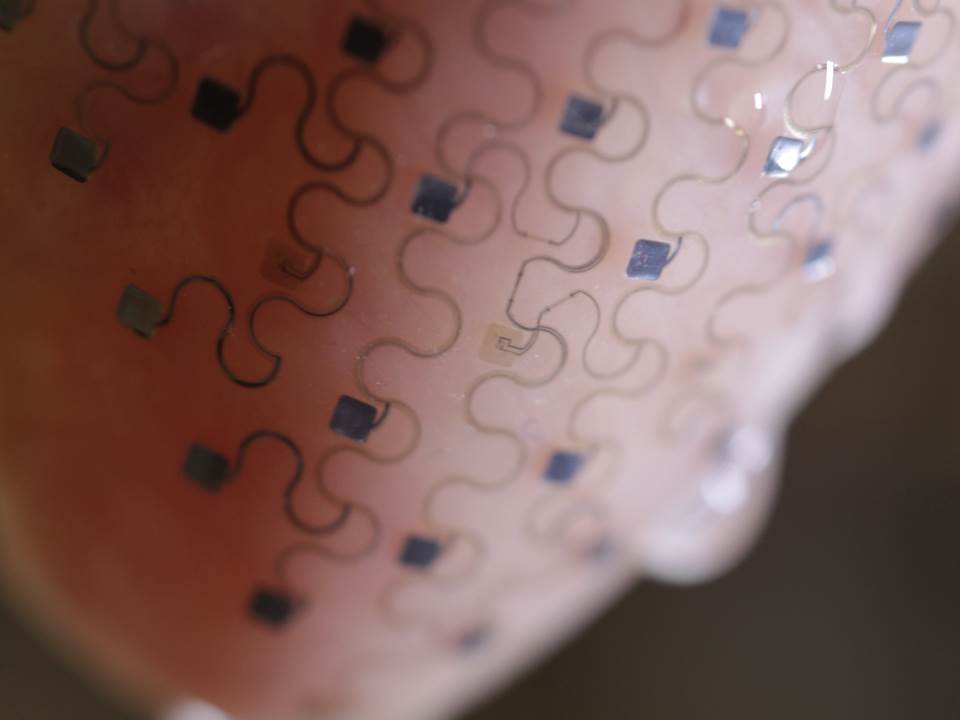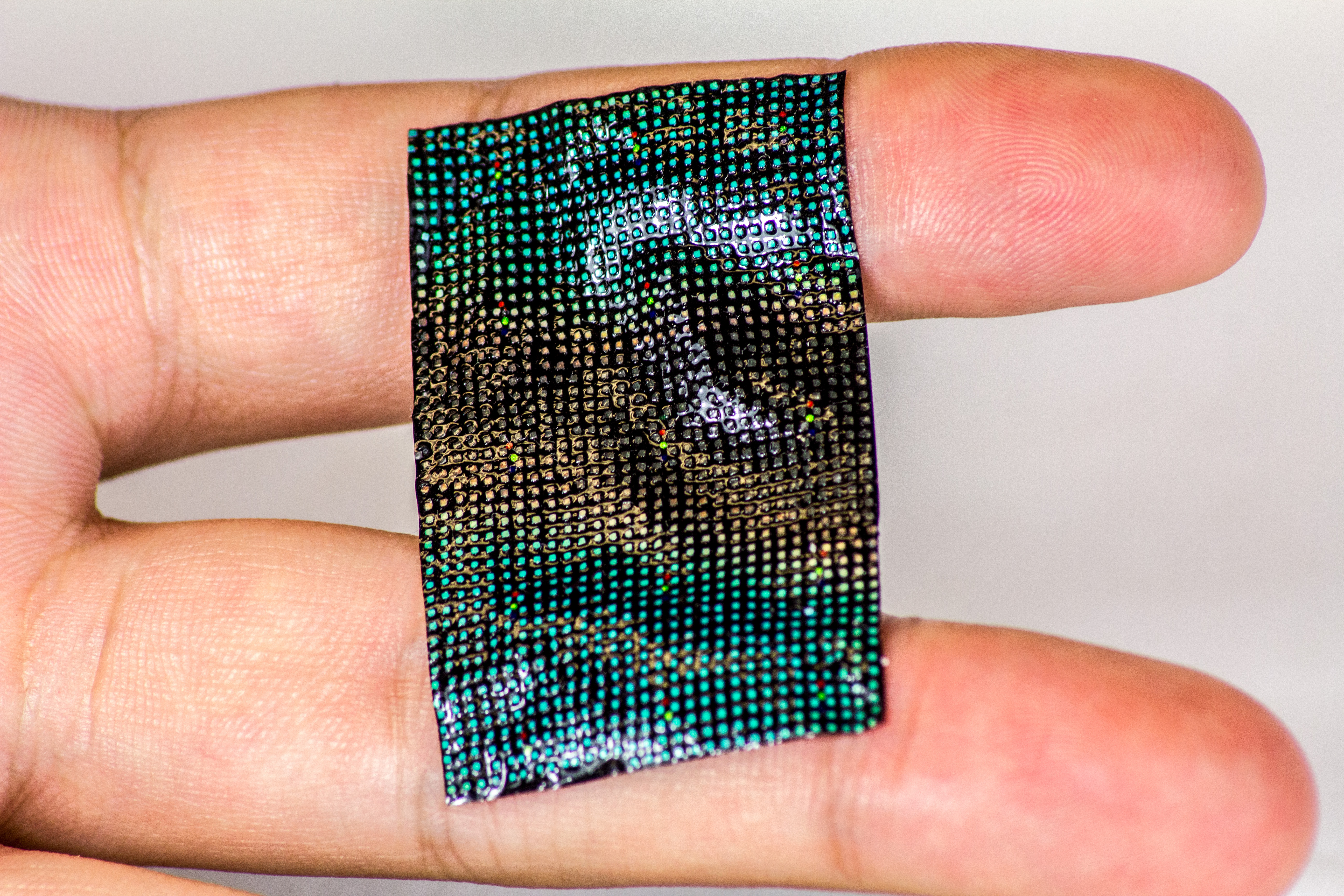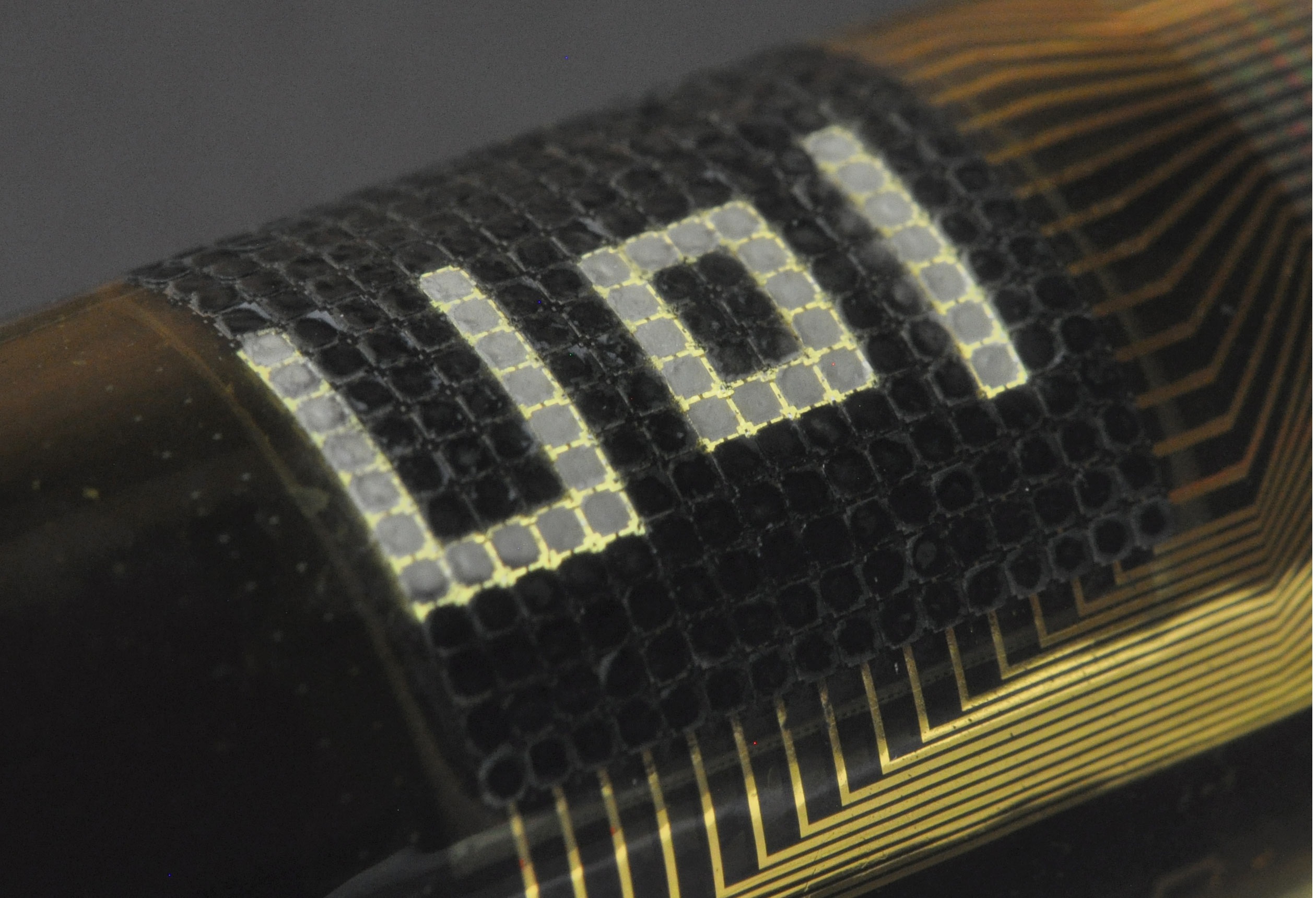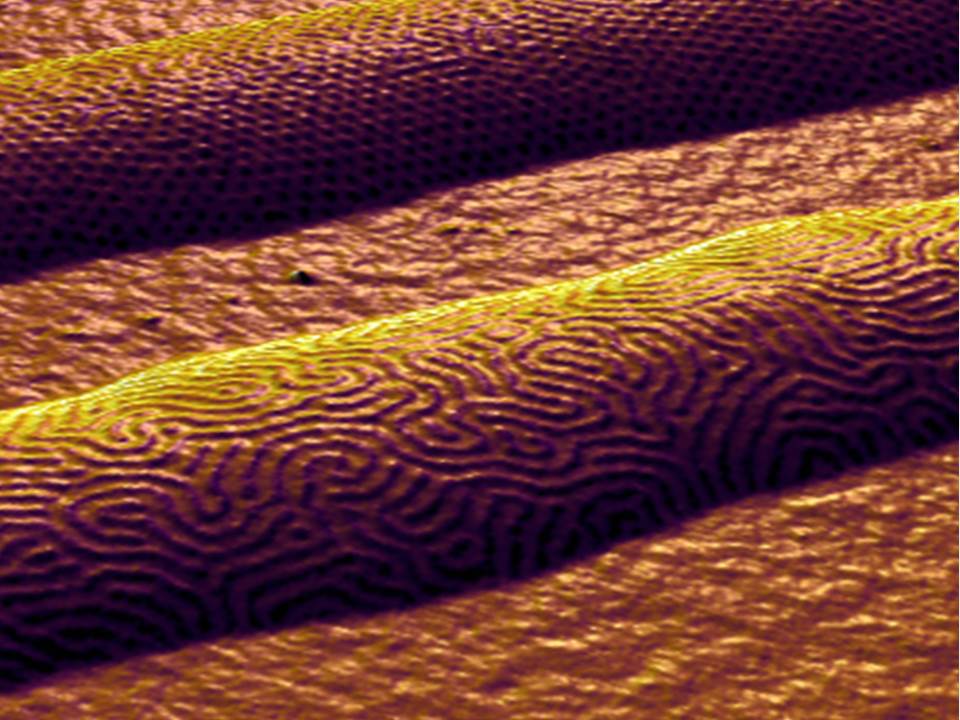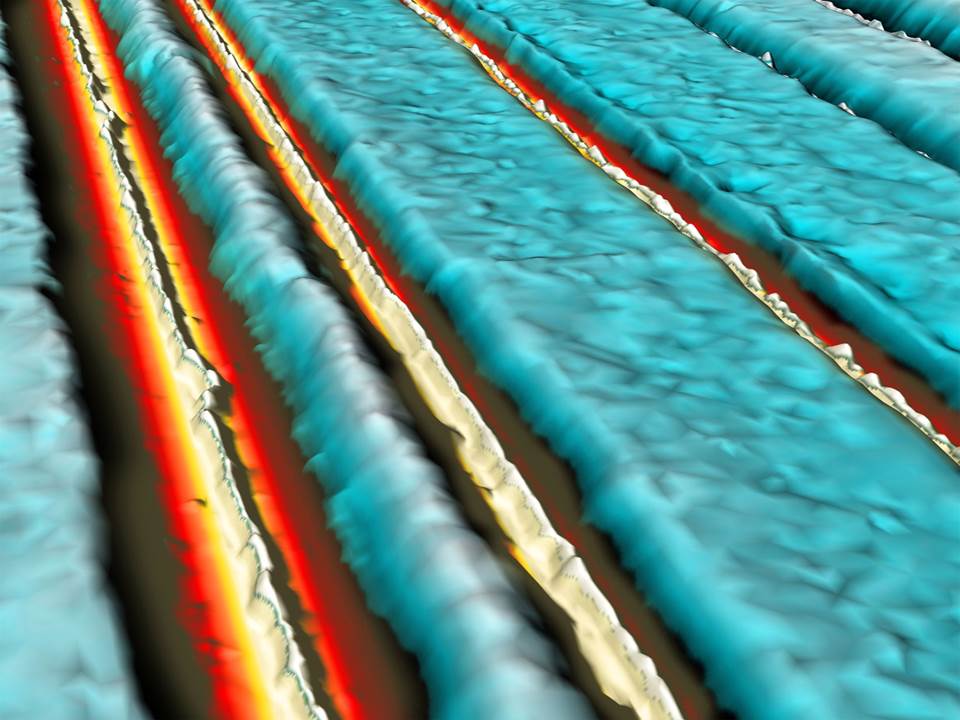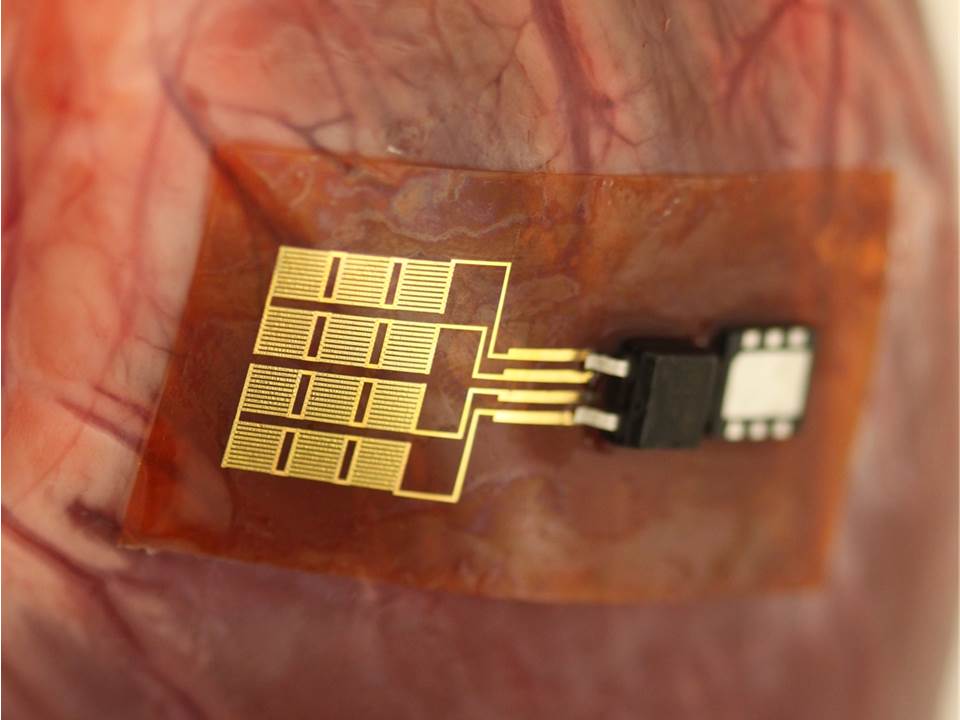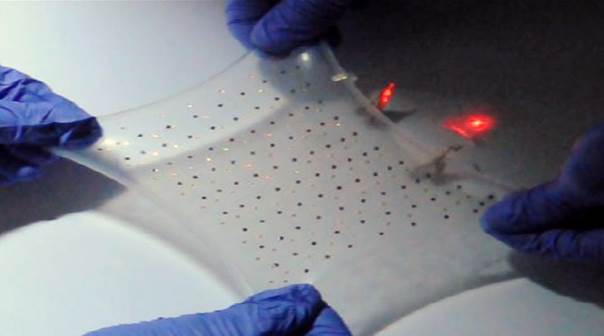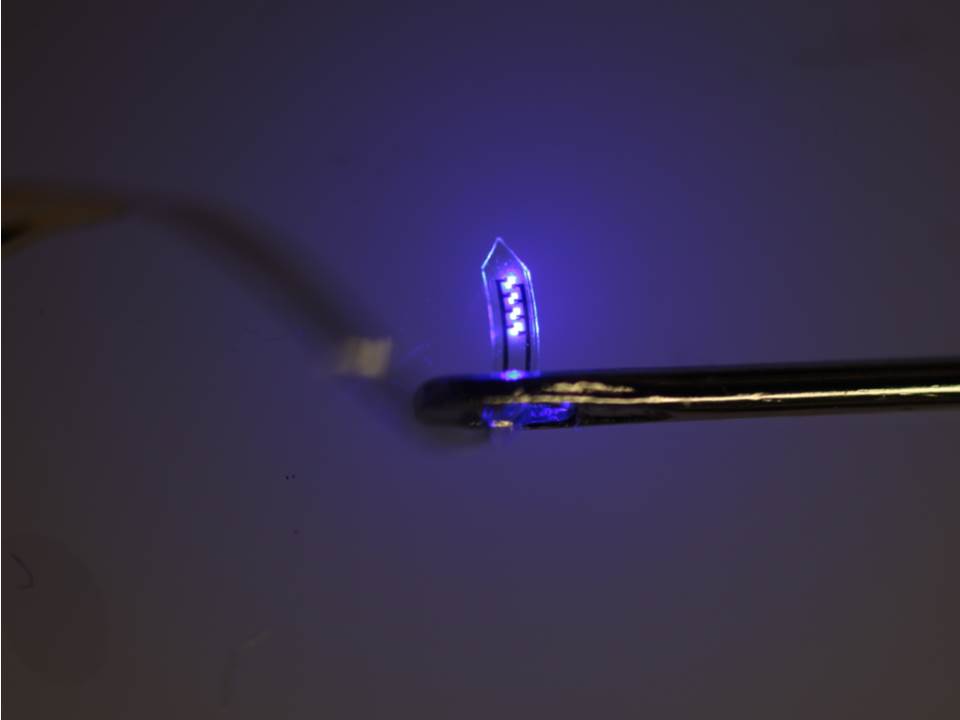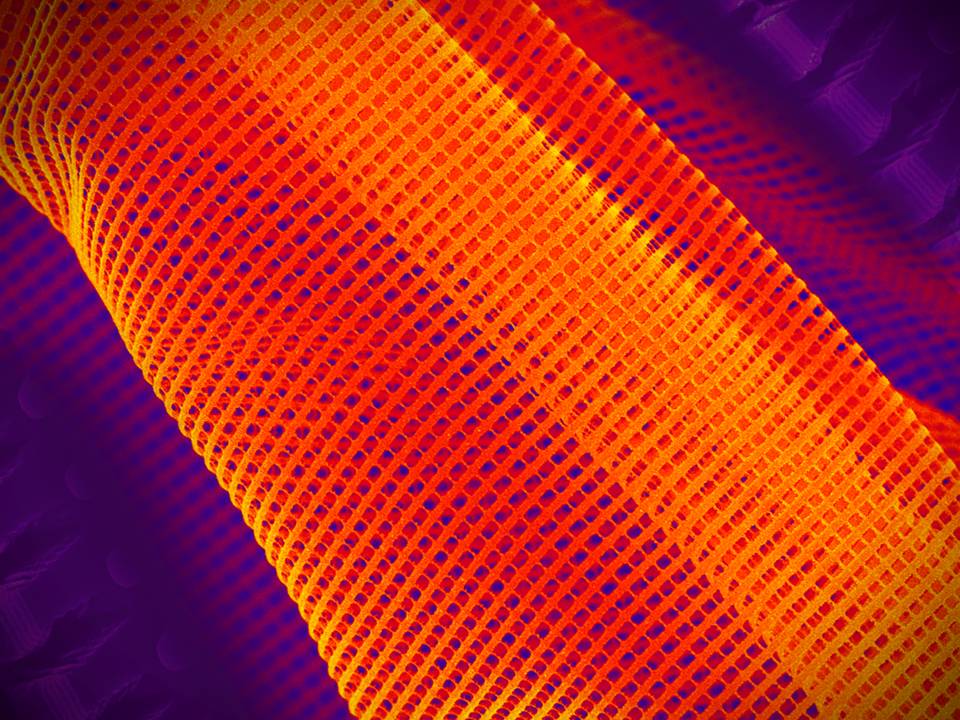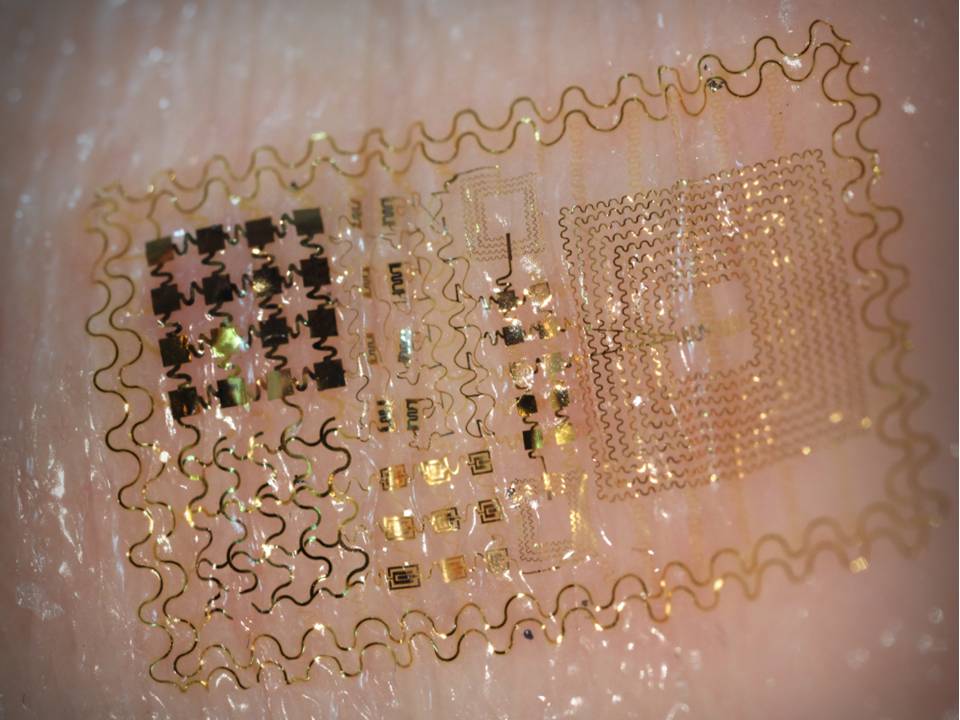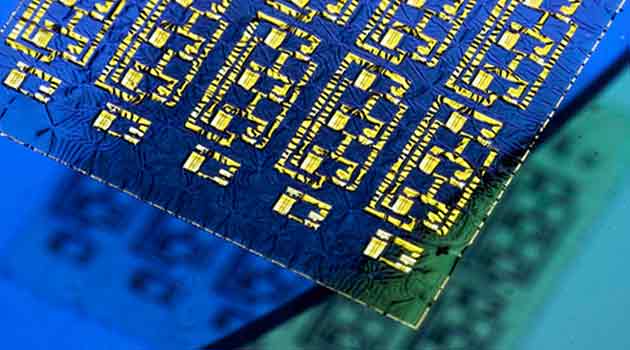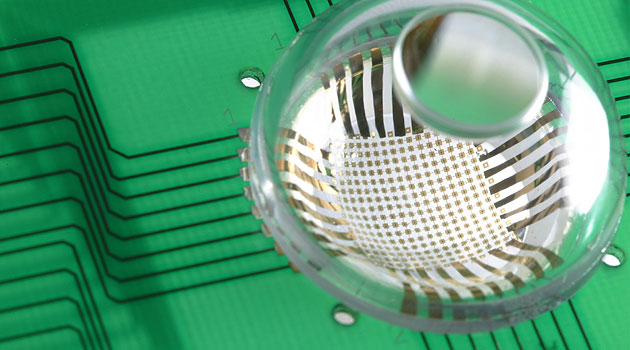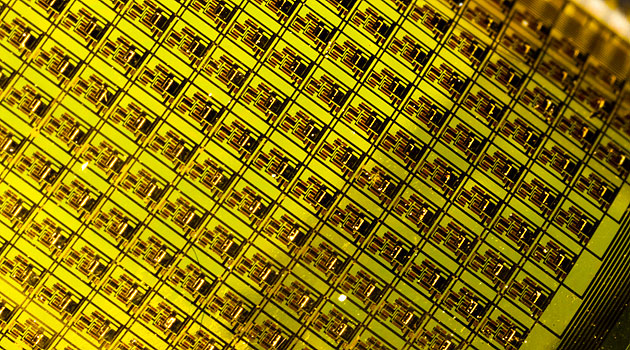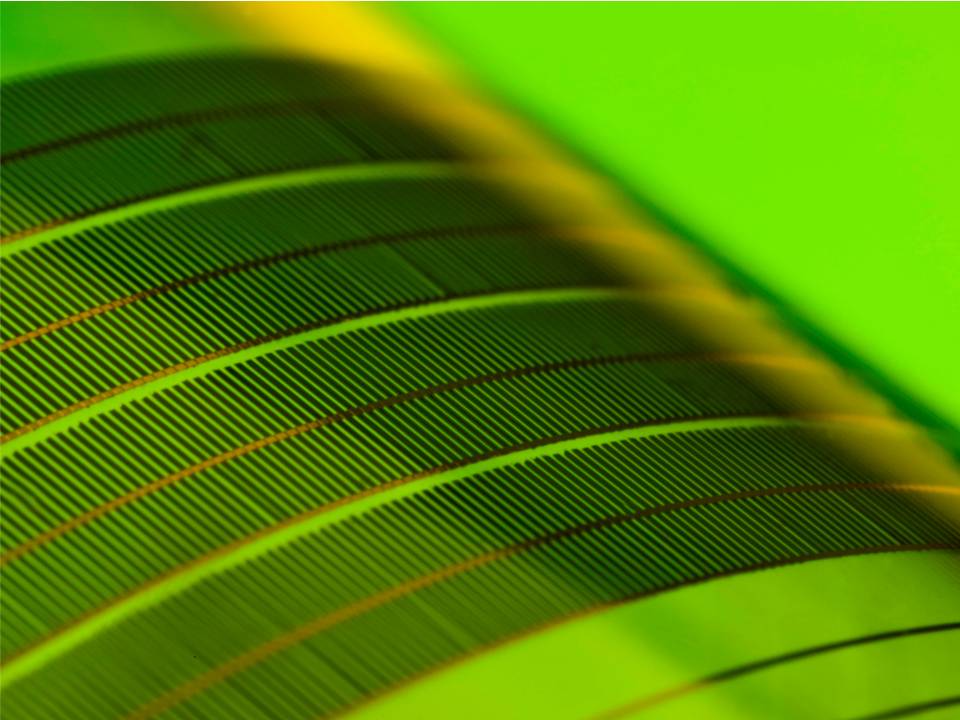
Rogers Research Group
LinkedIn: ProfJohnARogers
X: @ProfJohnARogers
We seek to understand and exploit interesting characteristics of 'soft' materials, such as polymers, liquid crystals, and biological tissues, and hybrid combinations of them with unusual classes of inorganic micro/nanomaterials -- ribbons, wires, membranes, tubes or related. Our aim is to control and induce novel electronic and photonic responses in these materials, and to develop new 'soft lithographic' and biomimetic approaches for patterning them and guiding their growth. This work combines fundamental studies with forward-looking engineering efforts in a way that promotes positive feedback between the two. Our current research focuses on soft materials for conformal electronics, nanophotonic structures, microfluidic devices, and microelectromechanical systems, all lately with an emphasis on bio-inspired and bio-integrated technologies. These efforts are highly multidisciplinary, and combine expertise from nearly every traditional field of technical study.
 Professor John A. Rogers
Professor John A. Rogers
Professor John A. Rogers obtained BA and BS degrees in chemistry and in physics from the University of Texas, Austin, in 1989. From MIT, he received SM degrees in physics and in chemistry in 1992 and the PhD degree in physical chemistry in 1995. From 1995 to 1997, Rogers was a Junior Fellow in the Harvard University Society of Fellows. During this time he also served as a founder and Director of Active Impulse Systems, a company that commercialized technologies developed during his PhD work. He joined Bell Laboratories as a Member of Technical Staff in the Condensed Matter Physics Research Department in 1997, and served as Director of this department from the end of 2000 to the end of 2002.
From 2003-2016, he was on the faculty at University of Illinois at Urbana/Champaign, where he held a Swanlund Chair, the highest chaired position at the university, with a primary appointment in the Department of Materials Science and Engineering, and joint appointments in the Departments of Chemistry, Bioengineering, Mechanical Science and Engineering, and Electrical and Computer Engineering. He served as the Director of a Nanoscale Science and Engineering Center on nanomanufacturing, funded by the National Science Foundation, from 2009-2012 and as Director of the Seitz Materials Research Laboratory from 2012 to 2016.
In September of 2016, he joined Northwestern University as the Louis Simpson and Kimberly Querrey Professor of Materials Science and Engineering, Biomedical Engineering, Mechanical Engineering, Electrical Engineering and Computer Science, Chemistry and Neurological Surgery, where he is also the founding Director of the newly endowed Center on Bio-Integrated Electronics, recently elevated to the status of the Querrey-Simpson Institute of Bioelectronics.
Rogers’ research includes fundamental and applied aspects of nano and molecular scale fabrication as well as materials and patterning techniques for unusual electronic and photonic devices, with an emphasis on bio-integrated and bio-inspired systems. He has co-authored more than 1000 papers in peer-reviewed journals, and is an inventor on over 100 patents and patent applications, more than 70 of which are licensed or in active use by large companies and startups that he has co-founded.
His research has been recognized with many awards including, most recently, the Sigma Xi William Procter Prize for Scientific Achievement (2023), the 2024 IEEE Biomedical Engineering Award (2023), the James Prize in Science and Technology Integration from the National Academy of Sciences (2022), the Washington Award (2022), the Sigma Xi Monie Ferst Award (2021), a Guggenheim Fellowship (2021), the Nano Research Award from the Springer/Nature journal Nano Research (2020), Nancy DeLoye Fitzroy and Roland V. Fitzroy Medal of the ASME (2020), the Herbert Pardes Clinical Research Excellence Award (2020), the Benjamin Franklin Medal from the Franklin Institute (2019), the MRS Medal from the Materials Research Society (2018), the Samuel R. Natelson Award from the American Association for Clinical Chemistry (2018), the Nadai Medal from the American Society of Mechanical Engineers (2017), the IEEE EMBS Trailblazer Award (2016), the ETH Zurich Chemical Engineering Medal (2015), the A.C. Eringen Medal from the Society for Engineering Science (2014), the Smithsonian Award for American Ingenuity in the Physical Sciences (2013), the Robert Henry Thurston Award from the American Society of Mechanical Engineers (2013), the Mid-Career Researcher Award from the Materials Research Society (2013), the Lemelson-MIT Prize (2011), a MacArthur Fellowship from the John D. and Catherine T. MacArthur Foundation (2009), the George Smith Award from the IEEE (2009), the National Security Science and Engineering Faculty Fellowship from the Department of Defense (2008), the Daniel Drucker Eminent Faculty Award from the University of Illinois (2007) and the Leo Hendrick Baekeland Award from the American Chemical Society (2007). Rogers is a member of the National Academy of Engineering (NAE; 2011), the National Academy of Sciences (NAS; 2015), the National Academy of Medicine (NAM; 2019) and the American Academy of Arts and Sciences (AAAS; 2014), a Fellow of the Royal Society of the UK (FRS, 2025), the Royal Society of Chemistry (FRSC, 2025), the Institute for Electrical and Electronics Engineers (IEEE; 2009), the American Physical Society (APS; 2006), the Materials Research Society (MRS; 2007), the American Association for the Advancement of Science (AAAS; 2008) and the National Academy of Inventors (NAI; 2013). He received an Honoris Causa Doctorate from the Ecole Polytechnique Federale de Lausanne (EPFL), a Doctor of Humane Letters, honoris causa, from the University of Houston, a Doctor of Science, Honoris Causa, from the University of Missouri at Columbia, and holds Honorary Professorships at Fudan University, Shanghai Jiaotong University and Zhejiang University. Rogers was elected as a Laureate of the Order of Lincoln, the highest award bestowed on an individual by the state of Illinois, in 2021 (fewer than 400 laureates have been elected since the program started in 1964).
Rogers has also been named to many distinguished lectureships, including:
DTU Ørsted Lecture, Technical University of Denmark, 2026.
Sir Peter Mansfield Lecture, Queen Mary University of London, 2025.
Edison Lecture, University of Notre Dame, 2025.
Shu & KC Chien Distinguished Lecture in Biomedical Engineering, Columbia University, 2025.
CoE Dean's Distinguished Lecturer, Nanyang Technological University, 2025.
Distinguished Lecturer of the Hagler Institute, Texas A&M University, 2025.
Jefferson Engineering Lectureship (inaugural), University of Virginia, 2025.
Milne Lecture, University of Edinburgh, 2025.
PAIR Distinguished Lecture, The Hong Kong Polytechnic University, 2025.
DIAKEN Lecture, Tsinghua Shenzhen International Graduate School, 2025.
IAM Sparkling Lecture, Nanjing Tech University, 2024.
Xianlin Forum, Nanjing University, 2024.
Global Visionary Lecture, Southeast University, 2024.
University Lecture, UT Southwestern Medical Center, 2024.
Dong Qin Memorial Lecture, University of Pennsylvania, 2024.
Selden Lecture, International Anesthesia Research Society, 2024.
IMS Distinguished Lecture, University of Connecticut, 2024.
Ward Lecture, Villanova University, 2023.
ZJU Huang Minglong Lecture, Zhejiang University, 2023.
Penner Lecture, University of California at San Diego, 2023.
Linnaeus Lecture, Uppsala University, 2023.
Munushian Lecture, University of Southern California, 2023.
Pearsall Lecture, Duke University, 2023.
Merel H. Harmel Lecture, Duke University, 2023.
Kilpatrick Lectureship, Illinois Institute of Technology, 2022.
Yungu Lectureship (inaugural), Westlake University, 2022.
Kelly Lecture, Virginia Tech, 2022.
Thomas Bell Lecture, Cleveland State University, 2022.
FORUM Annual Lecture, the Academy of Medical Sciences of the UK, 2020. (virtual)
John Goodenough Materials Innovation Lecture, University of Texas at Austin, 2020. (virtual)
Burack President Distinguished Lecture, University of Vermont, 2020. (canceled)
Wallace H Coulter Lecture, Pittcon, 2020.
Tlusty Manufacturing Lecture, University of Florida, 2020. (canceled)
Fred Kavli Distinguished Lectureship in Materials Science, Materials Research Society, 2020.
Carlton Society Lectureship, 3M, 2019.
Hefei Forum of Great Minds Lecture, University of Science and Technology of China, 2018.
James D. Meindl Lecture, Georgia Institute of Technology, 2018.
Closs Lectureship, University of Chicago, 2018.
Naff Lecture, University of Kentucky, 2017.
Louis Simpson and Kimberly Querrey Lecture, Northwestern University, 2017.
William and Joan Caro Lectureship, Northwestern University, 2017.
David Wang Distinguished Lecture, George Washington University, 2017.
Bagwell Lectureship, Purdue University, 2017.
Rockwell Lectureship, University of Houston, 2017.
Tsinghua Global Vision Lecture, Tsinghua University, 2016.
Parratt Lectureship, Cornell University, 2016.
Pritchett Lectureship, Georgia Tech, 2016.
Sectional Lecture, International Congress of Theoretical and Applied Mechanics, 2016.
Malmstrom Physics Lecture Series, Hamline University, 2016.
Covestro Lectures, University of Pittsburg, 2016.
Dr R A Mashelkar Endowment Lecture, CSIR-NCL, 2015.
IEEE Distinguished Lecturer, Indian Institute of Technology, Bombay, 2015.
SNU-Dongjin Lectureship, Seoul National University, 2015.
Claritas Distinguished Speaker in Science, Susquehanna University, 2015.
Weissberger/Williams/Farid Lectureship, Kodak Research Labs, 2015.
Fowler Distinguished Lecture, Texas A&M University, 2015.
Inaugural Lecturer for the Institute for Materials Science, Los Alamos National Laboratory, 2015.
'Science at the Edge' Lecturer at Michigan State University, 2015.
College of Engineering Distinguished Lecturer at University Georgia, 2015.
Etter Memorial Lectureship at University of Minnesota, 2015.
Laufer Lectureship at University of Southern California, 2014.
Presidential Lectureship at Northeastern University, 2014.
College of Engineering Distinguished Speaker at University of Texas at Arlington, 2014.
Plenary Lecture, Annual Meeting of the American Association for the Advancement of Science, 2014.
Kavli Foundation Innovations in Chemistry Lecture, American Chemical Society, 2014.
Xingda Lectureship at Peking University, 2013.
Adams Lectureship at Purdue University, 2013.
Presidents Distinguished Lectureship at KAUST, 2013.
Bircher Lectureship at Vanderbilt University, 2013.
Deans Distinguished Lectureship at Northwestern University, 2013.
ET Distinguished Speaker at Applied Materials, 2012.
Wulff Lectureship at M.I.T., 2012.
DB Robinson Distinguished Speaker at University of Alberta, 2012.
GT-COPE Lectureship at Georgia Institute of Technology, 2012.
Nyquist Lectureship at Yale University, 2011.
Judd Distinguished Lecturer at University of Utah, 2011.
ASU Distinguished Scholar and Lecturer at Arizona State University, 2011.
Rohsenow Lectureship at M.I.T., 2011.
Eastman Lectureship in Polymer Science, University of Akron, 2011.
Deans Distinguished Lectureship at Columbia University, 2010.
Nakamura Lectureship at University of California at Santa Barbara, 2010.
Chapman Lectureship (inaugural) at Rice University, 2009.
Zhongguancun Forum Lectureship, Chinese Academy of Sciences, 2007.
Dorn Lectureship at Northwestern University, 2007.
Xerox Distinguished Lectureship at Xerox Corporation, 2006.
Robert B. Woodward Scholar and Lectureship at Harvard University, 2001.
Highlights from 2024/2025 include the first:
- millimeter-scale cardiac pacemakers
- filamentary probes for pharmacological manipulation and fluorescence imaging of brain activity
- wearable platforms for dynamic measurements of gaseous flux from the skin
- advanced skin-integrated haptic and thermal actuators for augmented reality
- implantable, closed-loop systems for prevention of opioid overdose death
- mesoscale 3D frameworks for electromechanical studies of cardiac organoids
Highlights from 2023/2024 include the first:
- multi-point acousto-mechanical sensing of lung and GI health
- battery-free wireless systems for physiological montoring of small animals
- bioresorbable ultrasound 'tags' for monitoring deep tissue homeostasis
- wireless implants for early detection of kidney failure
Highlights from 2022/2023 include the first:
- responsive materials for safety in bioelectronic systems
- wireless, optoelectronically controlled biobots
- dynamic, shape programmable mechanical metasurfaces
- high performance bio/ecoresobable primary batteries
- passive microfliers for environmental monitoring
Highlights from 2021/2022 include the first:
- soft, bioresorbable coolers for reversible block of pain
- submillimeter-scale, remote controlled multimaterial terrestrial robots
- transient closed-loop wireless body-networked systems for programmed electrotherapy
- eco/bioresorbable microelectromechanical systems
- photocurable bioresorbable adhesives for bioelectronic devices
Highlights from 2020/2021 include the first:
- wireless, skin-interfaced biosensors for cerebral hemodynamic monitoring in pediatric care
- 3D frameworks as multifunctional neural interfaces to cortical spheroids and as frameworks for forming engineered assembloids
- advanced sweat microfluidic systems for real-time tracking of sweat rate/loss for monitoring nutrition and for screening for cystic fibrosis
- wireless, bioresorbable devices as temporary pacemakers
- wirelessly programmable, implantable optoelectronic probes for studies of the neuroscience of social interactions in small animal models
Highlights from 2019/2020 include the first:
- epidermal haptic interfaces for virtual and augmented reality
- physiological sensor systems for the suprasternal notch, from sleep studies to COVID19 monitoring
- advanced wireless devices for neonatal/fetal health, with scaled deployments into Africa
- kiloscale flexible devices for chronic electrocorticography, with demonstrations in non-human primates
- flexible, wireless, fully implantable optoelectronic/fluidic probes as interfaces to the brain, spinal cord and peripheral nerves
Highlights from 2018/2019 include the first:
- bioresorbable electronic medicines for accelerated nerve healing
- closed-loop bio-optoelectronic systems for peripheral neuromodulation
- skin-interfaced platforms for non-invasive monitoring of flow through cerebrospinal shunts
- skin-like wireless devices for clinical grade monitoring of vital signs in neonates
- full brain-scale flexible electronic platforms for high resolution electrocorticography
Highlights from 2017/2018 include the first:
- injectable, optoelectronic filaments for measuring brain activity, in vivo
- hair-like modulus sensors for targeted biopsies
- wireless epidermal sensors for full-body pressure and temperature mapping
- two dimensional semiconductors for bioresorbable electronics
- two dimensional materials for three dimensional cameras
Highlights from 2016/2017 include the first:
- wireless, battery-free fingernail electronics for blood oximetry and PPG
- fully implantable, NFC light emitting probes for optogenetics
- capacitive, active matrix techniques for high resolution electrophysiology
- capillary bursting valves for chrono-sampling and pressure measurements of sweating
- self-assembled 3D coil interconnects in functional electronic systems
Highlights from 2015/2016 include the first:
- thin film encapsulation strategies for chronic, flexible electronic implants
- soft, skin-like microfluidic systems for capture, storage and analysis of sweat
- wireless power harvesting systems and optical sensors for epidermal electronics
- epidermal mechano-acoustic sensing electronics for cardiovascular diagnostics
- bioresorbable silicon electronic sensors for the brain
Highlights from 2014/2015 include the first:
- mechanically driven self-assembly of 3D micro/nanostructures in device-grade silicon
- wireless, injectable optofluidic needles for in vivo pharmacology and optogenetics
- epidermal piezoelectric systems for characterization of soft tissue biomechanics
- auricle-mounted electrodes for persistent brain-computer interfaces
- silk-based resorbable electronics for wireless infection abatement
Highlights from 2013/2014 include the first:
- soft, microfluidic assemblies of sensors, circuits and radios for the skin
- flexible devices for harvesting and storing electrical power from motions of the heart, lung and diaphragm
- 3D electronic integumentary membranes for sensing, actuating across the entire epicardium
- quadruple junction solar cells and modules with world record efficiencies
- biodegradable batteries
Highlights from 2012/2013 include the first:
- physically transient forms of silicon electronics
- injectable, cellular-scale optoelectronics
- compound apposition, 'bug-eye' cameras
- strechable lithium ion batteries
- scalable routes to arrays of semiconducting carbon nanotubes
Highlights from 2011/2012 include the first:
- flexible electronics for high resolution mapping of brain function
- 3D cavity-coupled plasmonic crystals
- electronically 'instrumented' sutures and surgical gloves
- wireless, implantable LEDs and sensors
- stretchable photovoltaics
Highlights from 2010/2011 include the first:
- 'epidermal' electronics
- electronic 'eyeball' cameras with continuously adjustable zoom magnification
- microcell luminescent concentrator photovoltaics
- 'cloak-scale' negative index metamaterials
- multi-functional electronic balloon catheters for interventional cardiology
Highlights from 2009/2010 include the first:
- multilayer, releasable epitaxy for photovoltaics, RF electronics and imaging
- first principles theory for aligned growth of carbon nanotube arrays
- bio-integrated electronics for high resolution cardiac EP mapping
- bio-resorbable devices for neural electrocorticography
- geometrically controlled adhesion in elastomers and use in deterministic assembly
Highlights from 2008/2009 include the first:
- printed microLED lighting systems and displays
- silicon-on-silk electronics for bioresorbable implants
- curvilinear electronics and paraboloid eye cameras
- high resolution, jet printed patterns of charge
- rubber-like silicon CMOS
Highlights from 2007/2008 include the first:
- electronic eye cameras
- stretchable silicon CMOS integrated circuits
- flexible, semi-transparent solar modules based on monocrystalline silicon
- flexible digital logic circuits based on SWNT thin films
- chemically synthesized, 2D carbon nanomaterials
Highlights from 2006/2007 include the first:
- observation and analysis of buckling mechanics in SWNTs
- quasi-3D plasmonics crystals for biosensing and imaging
- SWNT-based RF analog electronics, including the first all-nanotube transistor radios
- methods for electrohydrodynamic jet printing with sub-micron resolution
- routes to multilayer superstructures of aligned SWNTs
Highlights from 2005/2006 include the first:
- stretchable form of single crystal silicon
- GHz flexible transistors on plastic substrates
- single-step two photon 3D nanofabrication technique
- lithographic method with molecular scale (~1 nm) resolution
- printing approach for 3D, heterogeneous integration
- method for growing high density, horizontally aligned SWNTs
